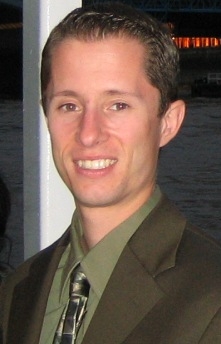|
 |
| Signup for our monthly newsletter on different industries. Receive the latest industry news, market trends, expert advice and more. |
| |
Signup | Unsubscribe |
|
|
|
| |

|
|
|
The Life Sciences Industry is helping the wheel of life move smoothly. TAG44 combines with industry experts for latest updates in the industry, thus keeping its readers abreast of the current happenings in the industry.
|
|
 Connecting Healthcare Professionals to Real-Time Patient Information
Connecting Healthcare Professionals to Real-Time Patient Information
By Thomas R. Cutler, President & CEO, TR Cutler Inc.
Published: April 2010
Improving patient care and safety is Flo Healthcare’s top priority as the company works with clinical software and OEM business partners to deliver patented, integrated solutions—infrastructure, devices and services—to medical facilities. With 45,000 mobile devices and wireless infrastructure systems installed within approximately 800 hospitals, Flo Healthcare is the acknowledged leader in total hospital and system-wide wireless and mobile clinical workstation installations across the United States and Canada.
|
|
|
|
 Electronic Submission of Diagnostic Medical Imaging Can Benefit Clinical Drug Trials
Electronic Submission of Diagnostic Medical Imaging Can Benefit Clinical Drug Trials
By Nicholas R. Enus, Senior Project Manager, Medical Imaging, Stephen Bates, Program Director, Medical Imaging and Keith Persson, Associate Director, Imaging Operations Perceptive Informatics, a PAREXEL Company
Published: March 2010
Electronic submission of diagnostic medical imaging can be utilized in clinical drug trials to speed the submission and independent analysis of medical imaging diagnostics by central imaging labs while also increasing quality of data.
|
|
|
|
 Protein Microarrays—“Without a Trace” Traceless and Site-specific Attachment of Proteins onto Solid Supports
Protein Microarrays—“Without a Trace” Traceless and Site-specific Attachment of Proteins onto Solid Supports
By Dr. Julio A. Camarero, Associate Professor, Department of Pharmaceutical Sciences, University of Southern California
Published: February 2010
Many experimental approaches in biology and biophysics, as well as applications in diagnosis and drug discovery, require proteins to be immobilized on solid supports. Protein microarrays, for example, provide a high-throughput format to study biomolecular interactions. The technique employed for protein immobilization is a key to the success of these applications. Recent biochemical developments are allowing, for the first time, the selective and traceless immobilization of proteins generated by cell-free systems without the need for purification and/or reconcentration prior to the immobilization step.Many experimental approaches in biology and biophysics, as well as applications in diagnosis and drug discovery, require proteins to be immobilized on solid supports. Protein microarrays, for example, provide a high-throughput format to study biomolecular interactions. The technique employed for protein immobilization is a key to the success of these applications. Recent biochemical developments are allowing, for the first time, the selective and traceless immobilization of proteins generated by cell-free systems without the need for purification and/or reconcentration prior to the immobilization step.
|
|
|
|
 Leading and Managing Technological Change in the Life Sciences
Leading and Managing Technological Change in the Life Sciences
By Diane L. Dixon, Managing Principal, D. Dixon & Associates, LLC
Published: January 2010
Advances in technology will enhance innovation and growth in the life sciences. As increasingly complex information is generated, the need to develop smart technology becomes even more important. Bioinformatics will have to continuously discover new ways to collect, organize, interpret, share, analyze, and reconcile often incompatible information formats. There is no doubt that innovation and technological change are inextricably linked. The challenge is keeping up with these changes and managing the human impact. All too often the focus is on implementing the new technology without taking into consideration how the people who must adapt to the changes will be affected. It is essential to understand that technical systems do not stand alone but rather they are interdependent with social systems.
|
|
|
|
 The Life Science C-Suite’s Top Outsource
Considerations
The Life Science C-Suite’s Top Outsource
Considerations
By Carole Pfeil, Vice President, Corporate Communications
Published: December 2009
It’s clear that to survive the changes in the current economic environment, including the globalization of products and services, life science companies must run lean and efficient organizations.
|
|
|
|
 The Life Science Industry – Gaining the Competitive Edge!
The Life Science Industry – Gaining the Competitive Edge!
By Carole Pfeil, Vice President, Corporate Communications
Published: November 2009
It’s clear that to survive the changes in the current economic environment, including the globalization of products and services, life science companies must run lean and efficient organizations.
|
|
|
|
 Towards a novel class of non-antibody based protein-capture reagents
Towards a novel class of non-antibody based protein-capture reagents
By Dr. Julio A. Camarero, Associate Professor, Department of Pharmaceutical Sciences
Published: October 2009
Available methods for producing and screening high-affinity ligands against particular molecular targets are either based in rational or combinatorial approaches. The rational approach usually requires the molecular structure of the bimolecular target, and then potential binders are selected from a virtual library of compounds using docking software. Despite recent advances in computing technology and the development of adaptive docking software, this is still a slow, although promising, process.
|
|
|



